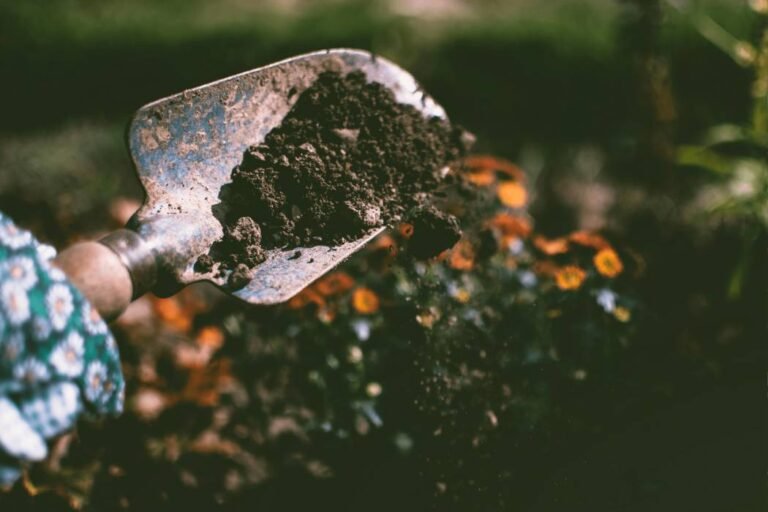Seasonal gardening is important because it helps plants grow better by matching them to the right time of year. When you plant at the right season, your plants get the right amount of sunlight, warmth, and water they need to thrive. This makes your garden healthier and reduces the need for chemicals like pesticides.
Seasonal gardening also keeps the soil strong and encourages a variety of plants to grow. But you need to be careful about what to plant in every season to get the best yield. Here are some suggestions about how to do seasonal gardening and how to plant the right crops at different times of the year.
Spring Gardening
Spring is a favorite season for many gardeners because it’s the perfect time to start growing a variety of plants. As the weather warms up, the soil becomes ready for planting. For vegetables, you can grow herbs like basil, spring onions, tomatoes, capsicum, and chili. If you have a larger garden, try planting cucumbers, eggplants, or pumpkins.
Spring is also an excellent time to grow flowering plants. Popular choices include snapdragons, marigolds, and geraniums. Geraniums are especially loved because they have beautiful blooms and come in over 300 different varieties. Be careful not to plant too early, though. If the soil is too cold, seeds and plants might struggle. Wait until the soil warms up, usually in late April or early May, to ensure the best results.
Summer Gardening
Summer is a busy time in the garden because many of your spring plants will begin to bear fruit. Vegetables like tomatoes, zucchini, chilies, and eggplants will be in full production. Be sure to water your plants well during this season, as the heat can dry out the soil quickly. Watering twice a day, especially for potted plants, can help keep your garden thriving.
If you’re planting in summer, consider growing vegetables like chilies, eggplants, and capsicum. Leafy greens such as rocket and lettuce also do well, but avoid planting herbs like dill and coriander, as they don’t handle heat well. You can also add summer flowers like cyclamens, which are hardy and can handle the warm weather.
One key tip for summer is to watch for pests. Rats and caterpillars are common, so regularly check your plants to prevent damage. Also, be on the lookout for root-knot nematodes, which can affect plants like tomatoes and eggplants.
Fall Gardening
Fall is the perfect time to prepare your garden for a winter harvest. The cooler weather makes planting enjoyable, and many vegetables can be grown to be harvested throughout winter and early spring. In the fall, plant root vegetables like carrots, turnips, beets, and radishes. Cruciferous vegetables like broccoli, cauliflower, Brussels sprouts, and kale also thrive during this time.
Fall is also a great time to plant onions, leeks, and garlic, which have long growing periods and will be ready to harvest in the spring. Some leafy greens, like spinach and lettuce, can still be planted in the fall and harvested throughout the cooler months.
For flowers, pansies are a great option to plant in early fall. They come in a variety of colors and will bloom from late fall through to spring. Other flowers like daisies, carnations, and nasturtiums will also add color to your fall garden. Keep an eye out for pests like the white cabbage moth, which targets vegetables like kale and broccoli. Using netting over your crops can help protect them from these pests.
Winter Gardening
Winter might seem like a time to take a break from gardening, but in many places, especially areas with mild winters, you can still grow a variety of plants. Dark, leafy vegetables such as spinach, kale, and Swiss chard do well in the cold and can provide you with a fresh harvest in the spring. In areas with a warmer climate, you can also plant winter-friendly vegetables like peas and winter cabbage.
If you’re looking to add some color to your winter garden, consider planting flowers like the Madeira range of Argyranthemum daisies, especially the ‘Red Double’ variety. These flowers bloom quickly and can brighten up your garden even during the coldest months. In areas where winters are harsher, you may need to protect your plants. Cold frames, greenhouses, and row covers can help keep your vegetables and flowers alive through the cold season. These tools can extend the growing period for some plants, allowing you to enjoy fresh greens even during winter.
General Gardening Tips for Every Season
Water Regularly: No matter the season, watering is crucial for keeping your garden healthy. In hot months like summer, water your plants twice a day to prevent them from drying out. In winter, make sure the soil stays moist but not waterlogged.
Choose the Right Pot Size: If you’re growing plants in pots, make sure they have enough room to grow. A large pot (about 20 inches wide and deep) will give your plants the space they need to thrive. Smaller pots will only support growth for a short time.
Use Good-Quality Potting Soil: The quality of your soil affects how well your plants grow. Invest in the best potting mix you can afford, as it will provide the nutrients your plants need to thrive.
Mulch Your Garden: Mulching helps keep moisture in the soil and prevents weeds from taking over your garden. Spread a layer of mulch around your plants to protect them from extreme weather.




